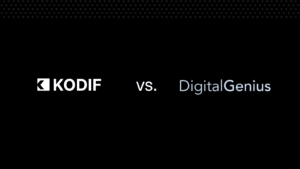If there’s one thing every apparel and footwear brand knows, it’s that returns are inevitable (but frustration doesn’t have to be!).
Wrong size, wrong fit, shipping delay, damaged item. The problems aren’t rare, they’re pretty routine.
And yet, how those moments are handled (ideally quickly, clearly, and with empathy) is what separates customer retention from customer regret.
Automation can help, but not if it’s just sending people to FAQ articles. To win trust in this space, brands need resolution-first automation: systems that don’t just talk about fixing things, but actually fix them.
Why CX matters so much in apparel
Apparel and footwear are often tied to identity, self-expression, and, most of all, a good fit.
When something goes wrong (and it often does), the expectation for a smooth resolution is sky-high.
Customers don’t want to just “submit a ticket”, they want to know when their replacement is coming or if they can get a different size right now.
Returns and exchanges are the #1 driver of CX volume in this category.
- The majority of those interactions are repetitive.
- Most of them can be automated, but your automation needs to be able to actually take action.
That’s the gap between deflection-first and resolution-first automation.
The problem with deflection-first CX
Too many “AI-powered” systems in ecommerce focus on deflection—trying to keep tickets away from humans at all costs.
The result is that…
- Customers click “return” and then get dumped into a help article.
- They try to exchange an item, but the bot “can’t access that system.”
- They end up contacting support anyway, twice as frustrated as before.
Deflection-first automation might make your metrics look pretty, but it doesn’t make customers feel cared for.
And in a category where loyalty depends on convenience and trust, that’s a bad, bad thing.
Why resolution matters more (and what you need to make it happen)
Resolution-first automation changes the equation completely. Instead of pointing people to answers, it takes action.
However, the tricky thing is that even the smartest AI can’t resolve what it can’t reach.
Your AI needs to talk to the systems that actually make things happen: your ecommerce platform, order management, shipping, loyalty, returns solutions, etc.
Without deep integration, automation gets stuck at the surface level, answering questions instead of acting on them.
That’s why integrations aren’t a nice-to-have, they’re the whole foundation.
When your AI connects directly with tools like Shopify, Recurly, Skio, Gladly, LoopReturns, ShipMonk, etc., it can:
- Instantly pull order and tracking data
- Trigger refunds, exchanges, or replacements in real time
- Apply discounts or loyalty rewards automatically
- Update customer profiles and histories across systems
Every connection gives your AI more context, and every action builds customer trust. Customers don’t care what system you’re using, they just care that it works.
Why returns and exchanges make or break apparel CX
Return and exchange actions are a loyalty moment. Handled poorly, they create churn. Handled well, they build trust.
According to Shopify research, 92% of customers say they’ll buy again if the return process is easy.
Resolution-first automation makes that possible. It shortens the gap between “problem reported” and “problem resolved,” which means fewer lost customers and more repeat buyers.
And when a case does need a human touch (like a damaged order or VIP complaint) smart handoffs ensure the context carries over perfectly.
The customer doesn’t have to repeat themselves. The agent picks up right where the AI left off. Smooth, fast, and frustration-free.
The KODIF difference
KODIF was built for CX teams who care about outcomes, not just deflection.
For apparel and footwear brands, that means:
- No-code automation builder → CX teams can launch and update workflows instantly: no Jira tickets, no waiting on dev.
- Deep ecommerce integrations → Shopify, LoopReturns, Skio, ShipMonk, Gladly, and 100+ others — so automations don’t just inform, they act.
- Smart Tags + Insights → Automatically track return reasons (“too small,” “color mismatch,” “damaged on arrival”) to uncover trends and reduce repeat issues.
- Resolution-first mindset → Every interaction is designed to end with a fix, not a form.
Final word
Apparel and footwear brands live and die by experience. Products get customers in the door, but smooth resolutions keep them coming back.
Deflection-first automation can lower your ticket count, but resolution-first automation can raise your retention rate.
Customers don’t judge your brand by how you handle sales, they judge you by how you handle problems.
With KODIF, those moments stop being pain points and start being growth drivers.
Want to see what resolution-first automation looks like for apparel CX? Book a demo, we’re friendly!









